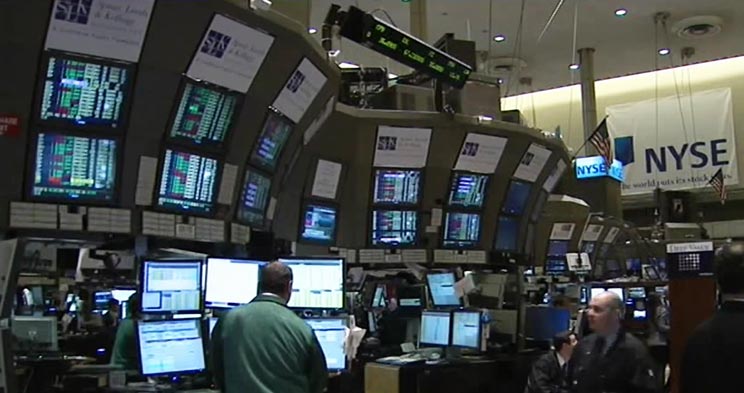On the afternoon of May 6, 2010, a financial tsunami hit Wall Street. Stunned traders watched as graphs on their computer screens traced the vertiginous 998-point plunge in the Dow Jones Industrial Average, which erased $1 trillion in market value in 36 minutes.
There was little in the way of fundamental news to drive such a dramatic decline, and stocks bounced back later that day. The event, quickly dubbed the “flash crash,” focused attention on the role of high-frequency trading and algorithms in amplifying market volatility.
Thick vs. thin
So far, though, there’s been remarkably little in the way of hard evidence on whether advances in information and communication technology help magnify market turbulence. Now, economists Barry Eichengreen, Arnaud Mehl, and the IMF’s Romain Lafarguette are trying to fill that gap. Their findings, surprisingly, are that faster transmission of market-moving news reduces volatility rather than increasing it.
The three economists present their research in a new IMF working paper titled “Thick vs. Thin-Skinned: Technology, News and Financial Market Reaction.”
The title refers to two popular hypotheses. The “thin-skinned” hypothesis holds that advances in information technology cause prices to react more violently to news by enabling strategies associated with volatility, such as algorithmic trading and stop-loss orders. High-frequency traders popularized by Michael Lewis’s 2014 book, Flash Boys, also have been blamed.
The “thick-skinned’’ hypothesis holds the opposite: advances in technology suppress volatility, because information that spreads more quickly reduces the information disadvantages of uninformed investors. Such investors “follow and amplify market trends by relying excessively on past or present returns to anticipate future returns,” the authors write. In other words, they engage in herd behavior, selling when prices fall and buying when prices rise. Better informed investors are less likely to follow the herd.
Ingenious test
Eichengreen and his co-authors have come up with an ingenious way of testing these hypotheses, by measuring reactions to news transmitted across superfast submarine fiber-optic cables.
“This result is consistent with the view that technology levels the informational playing field by easing access to information and that it thereby reduces trend following behavior,” they write.
Their laboratory is the world’s biggest financial market, the one for currencies, where average daily volumes exceed $4 trillion (more than the combined GDP of Italy and Brazil). They measured the reactions of currencies to major US economic news such as changes in gross domestic product, consumer prices and monetary policy.
London calling
To see how the speed of transmission affects the magnitude of the market reaction, they divided the markets into two groups: One receives news faster because it has direct fiber-optic connections with the major financial centers—Tokyo, London, and New York. The second set receives news more slowly, because it lacks direct fiber optic connections.
The amount of data they amassed is impressive: 240,430 observations for 56 bilateral exchange rates against the dollar between January 1, 1997, and November 30, 2015. Their conclusion: currencies traded in places which get their news faster via direct fiber-optic connections react less than currencies in places that receive their news more slowly. In fact, the reaction in markets with direct connections is 50 percent to 80 percent smaller.
Authors Eichengreen, Lafarguette, and Mehl decline to pass judgment on proposals to damp asset-price volatility by slowing the velocity of data flows with measures such as electronic “speed bumps.” But their study does suggest that transmitting information more broadly may reduce volatility.

